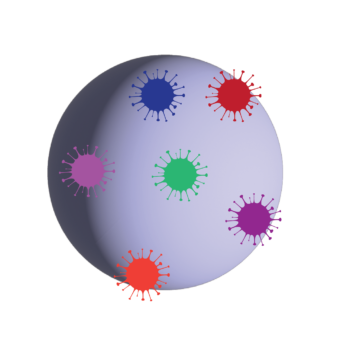Overview
The Modjadji Initiative is an academic and public health partnership that serves as a hub for wastewater-based pathogen surveillance method development. We aim to improve every steps involved in wastewater surveillance, from sample collection and processing to targeted sequencing and bioinformatics. Our ongoing work has largely focused on SARS-CoV-2, but we are establishing the tools to track a broader range of viruses including Hepatitis A/E, seasonal and avian Influenza, Measles, Rubella, as well as bacterial pathogens including M. tuberculosis.
Enrichment methods
Wastewater is a complex mixture, containing a broad array of genomic material from organisms including bacteria, viruses, and fungi, along with anything else that may pass down a drain. For most pathogens circulating in a community, this means that their associated fraction of nucleic acids may be vanishingly small. To enable sensitive and reliable wastewater pathogen monitoring, we are testing and validating pathogen enrichment methods.


Amplicon Schemes
Since a pathogen of interest often represents a tiny fraction of the total nucleic acids in a wastewater sample, conventional metatranscriptomic and metagenomic approaches are generally not sufficiently targeted to effectively recover relevant sequence data. To profile local pathogen diversity, we are developing tiled amplicon primer schemes that amplify genomic material for each target pathogen. Our team includes lead developers of the widely used ARTIC schemes, as well as the Primal Scheme method.
Bioinformatic Methods
As samples spread and evolve in a population, wastewater often contains extensive pathogen diversity that prevents analysis by conventional bioinformatic approaches. Our Freyja tool allows researchers to leverage the most up-to-date information on pathogen evolution to recover lineage prevalence over time and identify possible outbreaks before they get out of hand. Freyja is used for wastewater-based pathogen across the globe and has been downloaded >100k times. We are expanding Freyja to enable surveillance of additional target pathogens and to identify cryptic pathogen spread.

